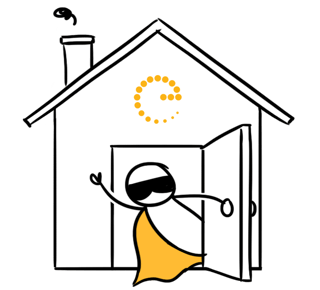
In this series, we’re heading behind the scenes at ExperiencePoint, introducing you to some of our team members and showing you how they’re using the principles of ExperienceInnovation and ExperienceChange to get game-changing results in their own areas and across the business.
For our second story, we wanted to delve into a classic innovation challenge. What better example than one involving our own innovation program?
The “Team Kit” contains all the materials a team will need when they participate in the ExperienceInnovation program, including pads of sticky notes, journals, markers and more for conducting experiments during the workshop. With sessions going on across the globe, these kits can travel long journeys to reach their destinations. And it’s not always a smooth trip.

We discovered that materials were often getting jostled, crushed or damaged along the way—certainly not the ideal user experience we wanted to create when someone opens the box and gets ready to dive into the workshop challenges.
This was especially disappointing because our Support Team was spending quite a bit of time assemblings these kits. There had to be a better way, one that could solve all the challenges, from shipping and materials costs to the user experience.
It was an opportunity that called for design thinking.
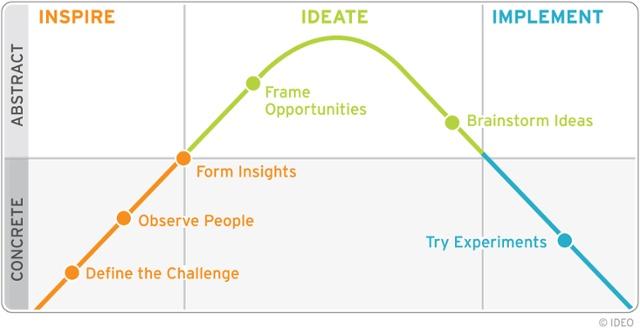
We talked with a few of the key players on this project, Andrew Webster, Director of Change and Innovation Solutions, and Joe Di Noto, Marketing Associate, to get an insider view of how it all went down. Here’s what we learned.
What was the driving/deciding factor to make the switch to a new design?
Andrew: There was a confluence of factors here. We wanted to address the materials (shipping and assembly) costs, but we also saw this as an opportunity to refresh the experience and adapt this component to accommodate future updates.
Joe: The materials were getting damaged during shipment, so that wasn’t great for the user experience. Not only that, it was time-consuming and tedious to put the kits together since the inner trays had to be hand-folded by Support Team employees. I know firsthand, because when I began working at ExperiencePoint, that was one of my responsibilities!
Who was involved in this process?
Andrew: Many teams have a stake in this: Support has a huge administrative burden, and Facilities has a huge warehousing burden surrounding these kits. Facilitation Delivery most directly interacts with our clients and the facilitators who are engaging with these materials in the field. Product Development must integrate these with the broader experience seamlessly. And Finance recognized this as an expensive aspect of our business. This diverse range of needs is part of the reason design thinking—radical collaboration at its finest—was employed.
Tell us a little about the process.
Andrew: A diverse team of about 7 people came together, each responsible for sharing some analogous inspiration: a physical artifact representing a delightful or exciting experience they've had in packaging. Some people brought in Happy Meal containers, others board game containers, and even weirder stuff.
Joe: After that initial brainstorming meeting, the original 7 team members were invited back to develop a prototype that could solve the problem How might we create a better user experience with our Team Kits? There were three criteria we gave ourselves to follow when prototyping: the new team kits had to be faster to produce, delivered in pristine condition and maintained the “reveal” component for the participant experience. My thought was to create something inspired by board games as a link to the program itself, which is gamified. We then brought those prototypes to the next brainstorming meeting.
Andrew: The team brainstormed and prototyped out some thoughts before leaning on Joe, our prototyping wiz, whose solution was chosen as the one to proceed with.
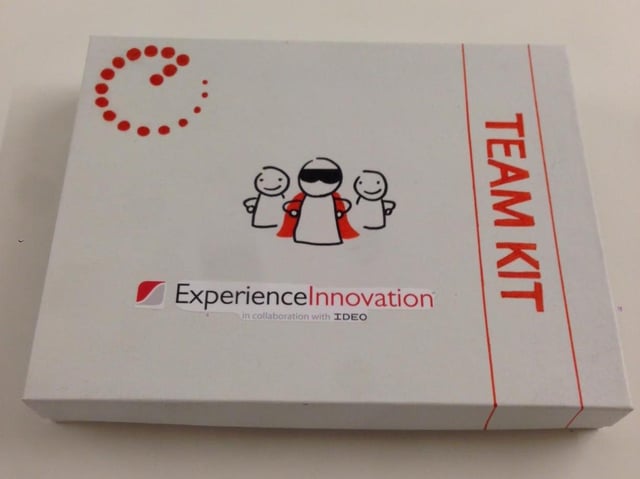
Can you describe the solution?
Joe: It’s an all-in-one piece that folds out like a board game. Because it’s self-contained and super compact, everything has its own spot, and nothing will get shifted around or damaged in shipment. And because it folds back like a tripod, the team can use it as a name tent on their table to display their team name to the facilitator. It’s been through about four refinements since the initial prototype, and part of that has been looking at how to make it as compact as possible while getting the most use out of every inch of the box.
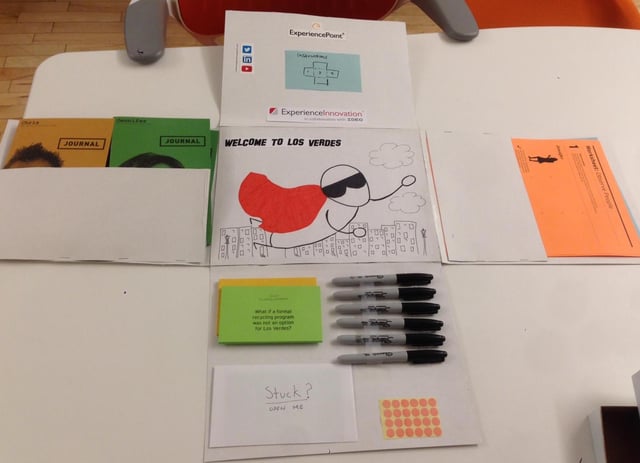
What happened after those initial refinements?
Joe: We just had the opportunity to test and observe the product in use during an internal “friends and family” ExperienceInnovation session—a low-risk, safe place to test it out in case it failed. That allowed us to observe the participants using the kit in an actual workshop.
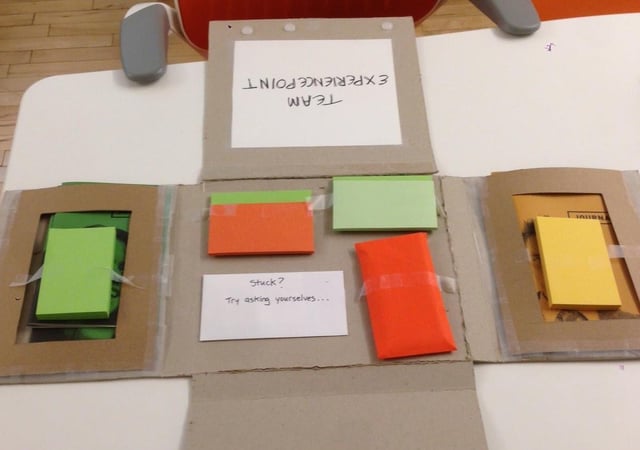
What did you learn from that initial testing and observation?
Joe: Well, we learned that people couldn’t figure out how to fold it back! So the next iteration may have instructions printed on the box, and the facilitator will be given instructions to explain to participants how to use it.
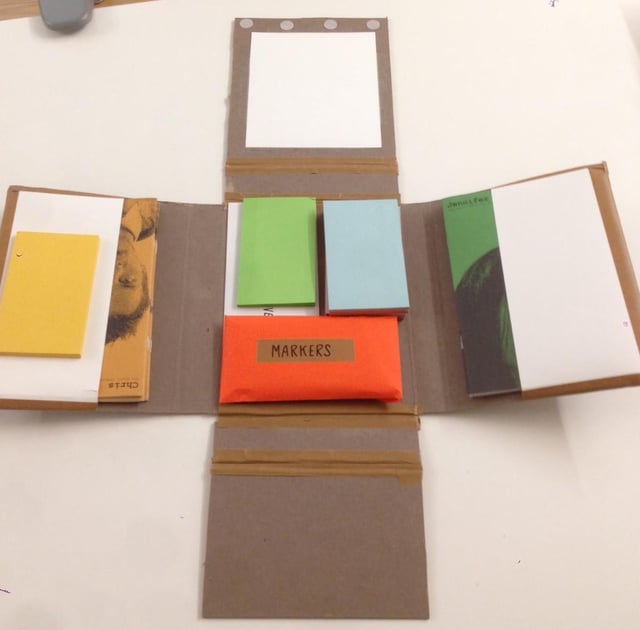
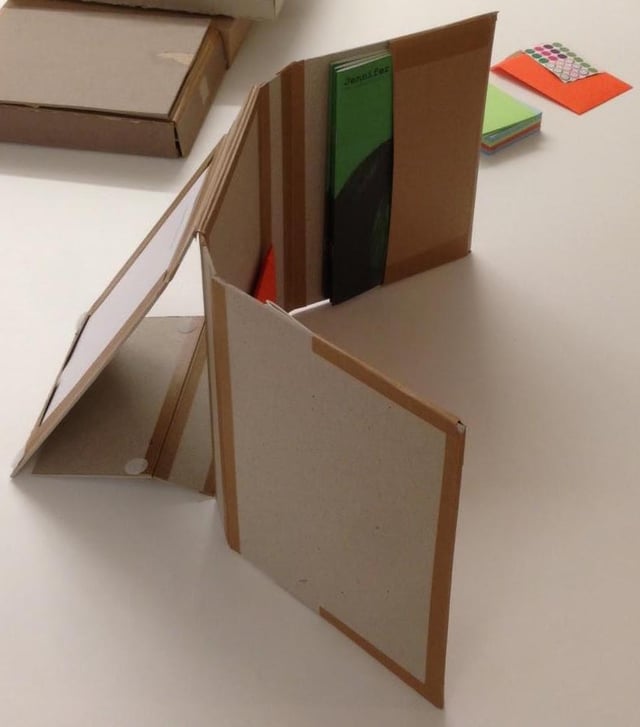
What’s next?
Joe: There will be more testing to come, with refinements and improvements based on those insights. That being said, I think we’re close! We’ve also been talking with packing vendors to make sure it’s feasible and to get a sense of costs. The final step will be to move into production so our participants can enjoy!

Stay tuned for more stories from behind the scenes of innovation and change!